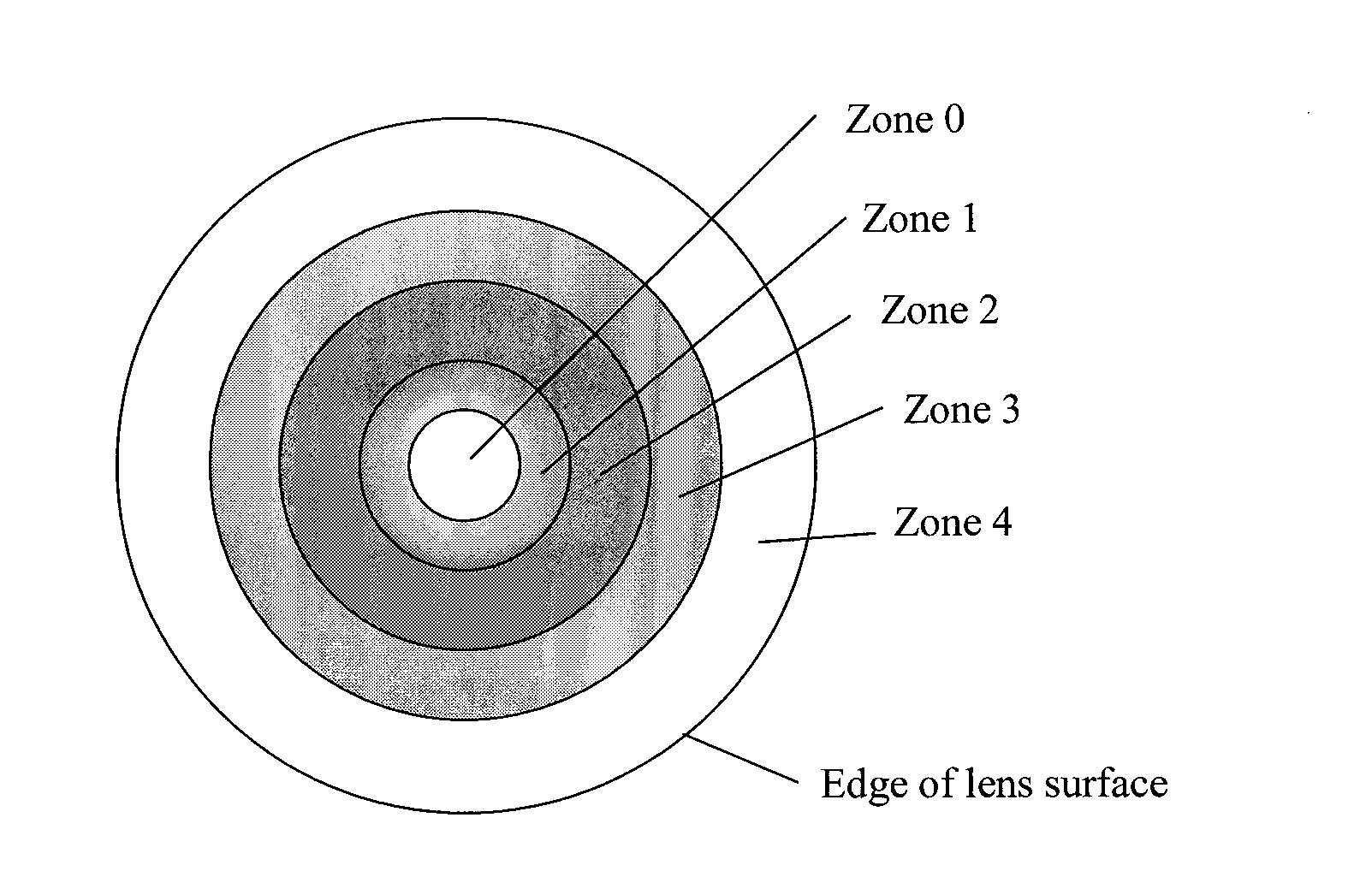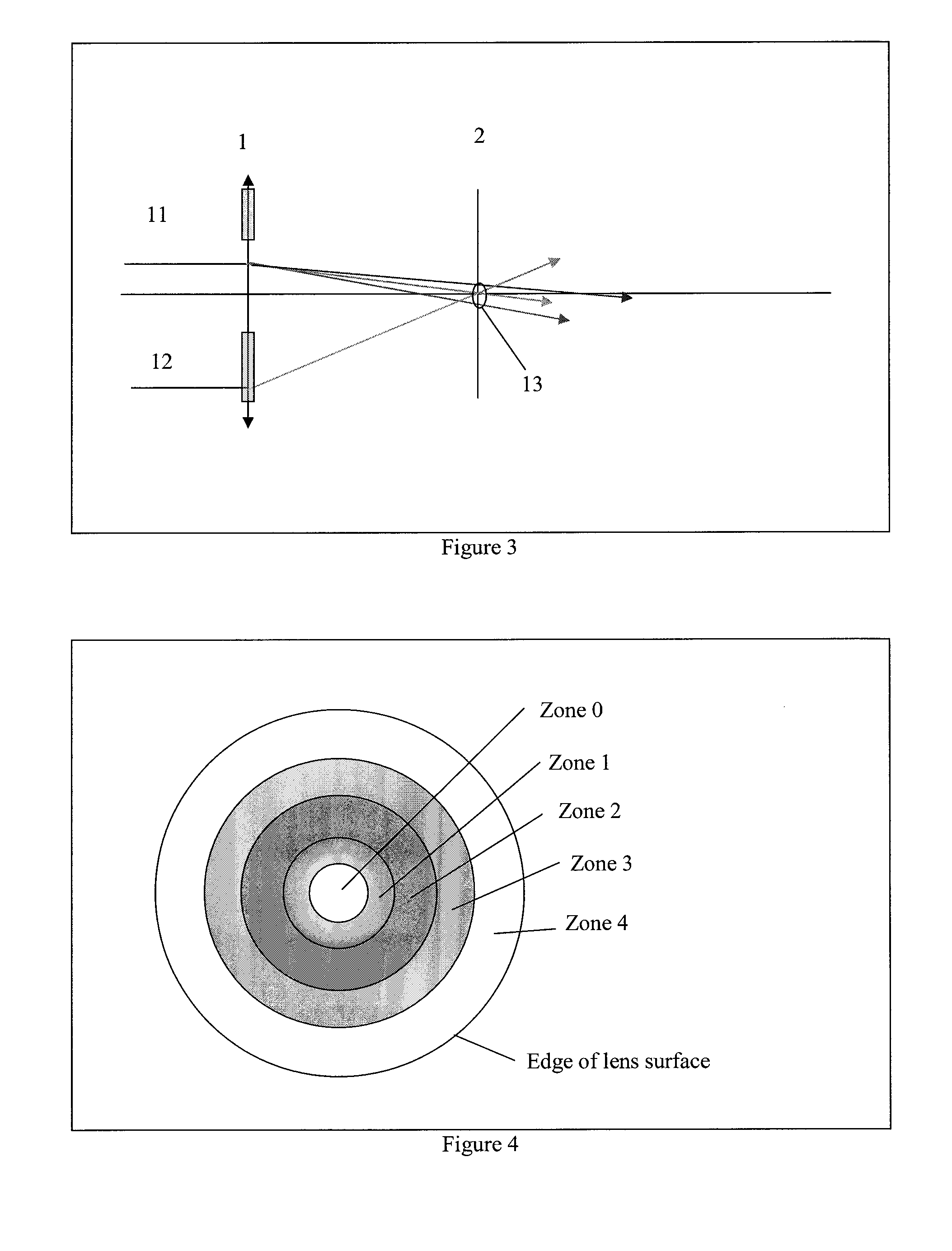Progressive chromatic aberration corrected ocular lens
- Summary
- Abstract
- Description
- Claims
- Application Information
AI Technical Summary
Benefits of technology
Problems solved by technology
Method used
Image
Examples
Embodiment Construction
[0027]While the present invention is susceptible of embodiment in various forms, there is shown in the drawings and will hereinafter be described a presently preferred, albeit not limiting, embodiment with the understanding that the present disclosure is to be considered an exemplification of the present invention and is not intended to limit the invention to the specific embodiments illustrated.
[0028]A simple paraxial model for a chromatic eye is illustrated in FIG. 1. In FIG. 1, a single lens 1 which represents all refractive elements of the corrected eye and an image plane 2 which represents the retina are positioned along an optical axis 3. An incoming chromatic ray 4 contains red, green, and blue wavelengths and is refracted by lens 1. After refraction, three rays emerge from lens 1 corresponding to the three wavelengths. Ray 5 represents the path taken by the red wavelength, ray 6 represents the path taken by the green wavelength, and ray 7 represents the path taken by the blu...
PUM
 Login to View More
Login to View More Abstract
Description
Claims
Application Information
 Login to View More
Login to View More - R&D
- Intellectual Property
- Life Sciences
- Materials
- Tech Scout
- Unparalleled Data Quality
- Higher Quality Content
- 60% Fewer Hallucinations
Browse by: Latest US Patents, China's latest patents, Technical Efficacy Thesaurus, Application Domain, Technology Topic, Popular Technical Reports.
© 2025 PatSnap. All rights reserved.Legal|Privacy policy|Modern Slavery Act Transparency Statement|Sitemap|About US| Contact US: help@patsnap.com



